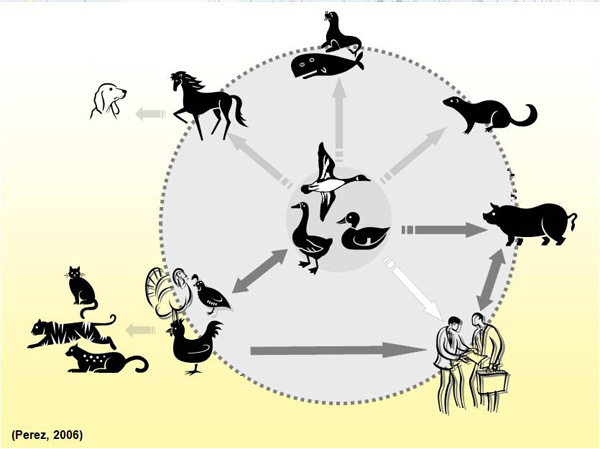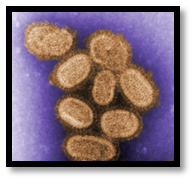Avian Influenza Biosecurity for Backyard Flock Owners
Section 1. Avian Influenza Facts
- Source and Transmission
- Agent Characteristics
- Virus Survival
- Clinical Signs in Birds
- HPAI H5N1
- Human Concerns
Source and Transmission
What is avian influenza?
|
AI Reservoir and Host Transmission Figure Credit: Dr. Daniel Perez
|
How do birds get avian influenza?
|

CDC Image Library: Cynthia Goldsmith
|
